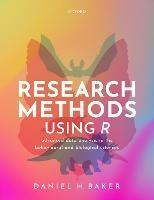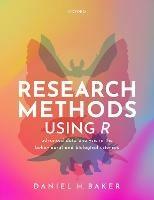L’articolo è stato aggiunto alla lista dei desideri
IBS.it, l'altro eCommerce
Research Methods Using R: Advanced Data Analysis in the Behavioural and Biological Sciences
Cliccando su “Conferma” dichiari che il contenuto da te inserito è conforme alle Condizioni Generali d’Uso del Sito ed alle Linee Guida sui Contenuti Vietati. Puoi rileggere e modificare e successivamente confermare il tuo contenuto. Tra poche ore lo troverai online (in caso contrario verifica la conformità del contenuto alle policy del Sito).
Grazie per la tua recensione!
Tra poche ore la vedrai online (in caso contrario verifica la conformità del testo alle nostre linee guida). Dopo la pubblicazione per te +4 punti



Tutti i formati ed edizioni
Providing complete coverage of advanced research methods for undergraduates, Daniel H. Baker supports students in their mastery of more advanced research methods and their application in R. This brand new title brings together coverage of a variety of topics for readers with basic statistical knowledge. It begins with material on the fundamental tools - nonlinear curve fitting and function optimization, stochastic methods, and Fourier (frequency) analysis - before leading readers on to more specialist content - bivariate and multivariate statistics, Bayesian statistics, and machine learning methods. Several chapters also discuss methods that can be used to improve research practises, including power analysis, meta-analysis, reproducible data analysis. Written to build a student's confidence with using R in a step-by-step way, early chapters present the essentials, ensuring that the content is accessible to those that have never programmed before. By giving them a feel for how the software works in practice, students are gradually introduced to simple examples of techniques before building up to more detailed implementations demonstrated in worked examples. Readers are also presented with opportunities to try analysis techniques for themselves. Practice questions are presented at the end of each chapter with answer guidance supplied in the book, while multiple-choice-questions with instant feedback can be accessed online. The author also provides datasets online which students can use to practise their new skills. Digital formats and resources This book is available for students and institutions to purchase in a variety of formats, and is supported by online resources. - The e-book offers a mobile experience and convenient access along with functionality, navigation features, and links that offer extra learning support. This book is accompanied by online resources including multiple-choice-questions with instant feedback, example code, and data files allowing students to run examples independently.
L'articolo è stato aggiunto al carrello
L’articolo è stato aggiunto alla lista dei desideri


